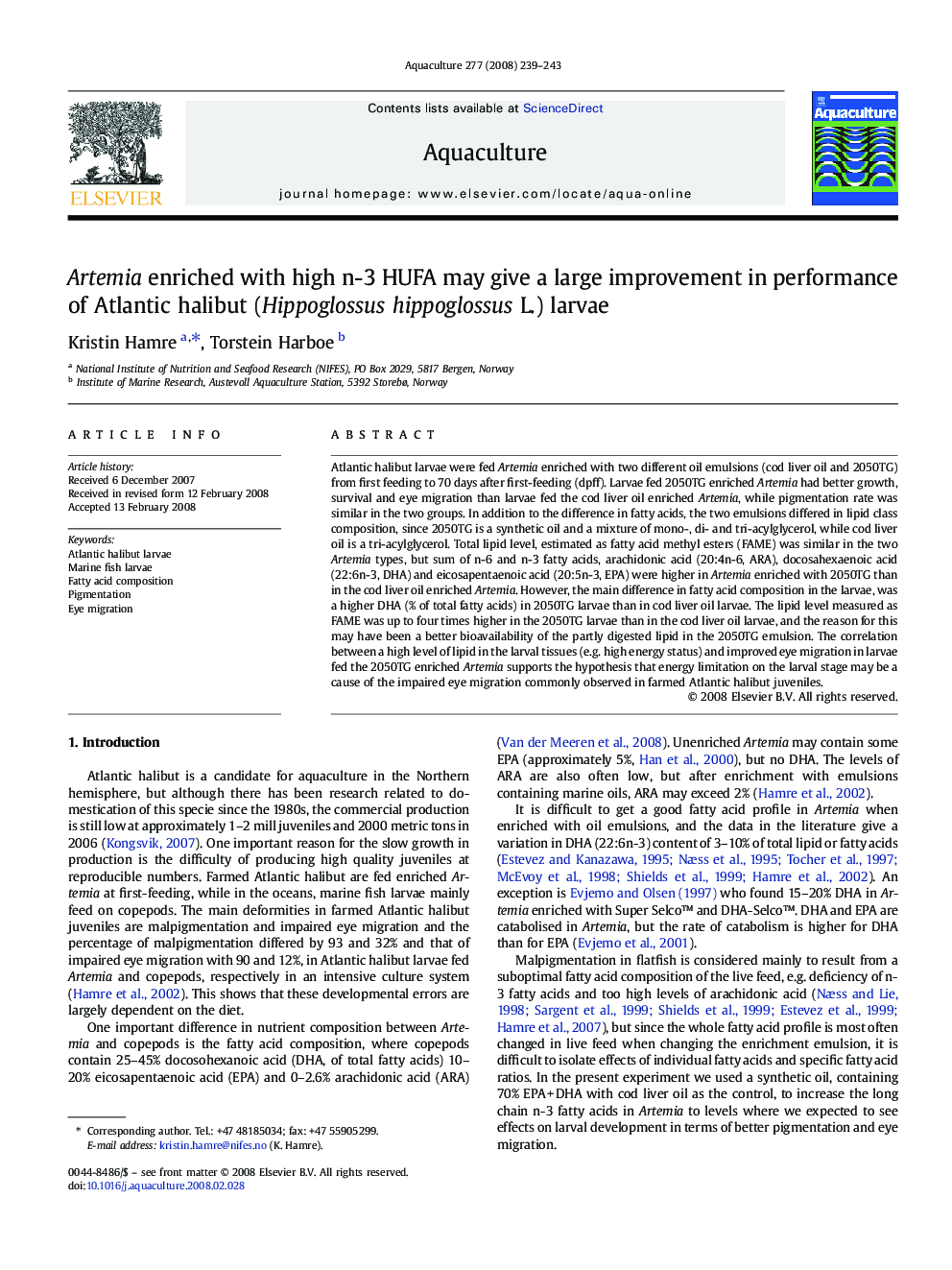| Article ID | Journal | Published Year | Pages | File Type |
|---|---|---|---|---|
| 2424819 | Aquaculture | 2008 | 5 Pages |
Atlantic halibut larvae were fed Artemia enriched with two different oil emulsions (cod liver oil and 2050TG) from first feeding to 70 days after first-feeding (dpff). Larvae fed 2050TG enriched Artemia had better growth, survival and eye migration than larvae fed the cod liver oil enriched Artemia, while pigmentation rate was similar in the two groups. In addition to the difference in fatty acids, the two emulsions differed in lipid class composition, since 2050TG is a synthetic oil and a mixture of mono-, di- and tri-acylglycerol, while cod liver oil is a tri-acylglycerol. Total lipid level, estimated as fatty acid methyl esters (FAME) was similar in the two Artemia types, but sum of n-6 and n-3 fatty acids, arachidonic acid (20:4n-6, ARA), docosahexaenoic acid (22:6n-3, DHA) and eicosapentaenoic acid (20:5n-3, EPA) were higher in Artemia enriched with 2050TG than in the cod liver oil enriched Artemia. However, the main difference in fatty acid composition in the larvae, was a higher DHA (% of total fatty acids) in 2050TG larvae than in cod liver oil larvae. The lipid level measured as FAME was up to four times higher in the 2050TG larvae than in the cod liver oil larvae, and the reason for this may have been a better bioavailability of the partly digested lipid in the 2050TG emulsion. The correlation between a high level of lipid in the larval tissues (e.g. high energy status) and improved eye migration in larvae fed the 2050TG enriched Artemia supports the hypothesis that energy limitation on the larval stage may be a cause of the impaired eye migration commonly observed in farmed Atlantic halibut juveniles.
